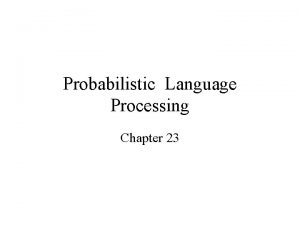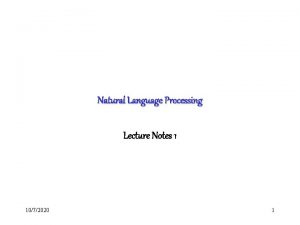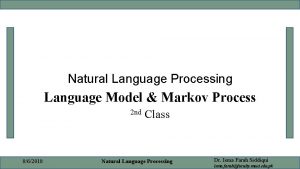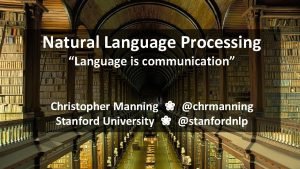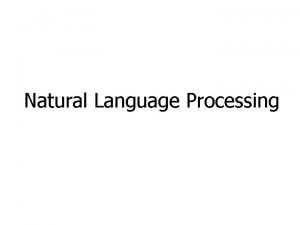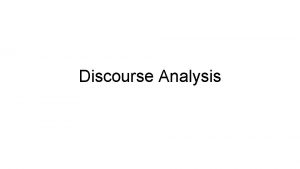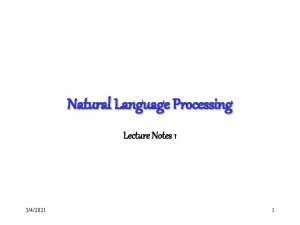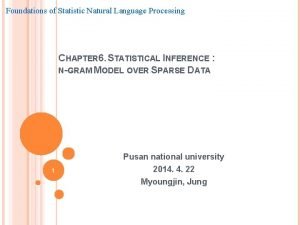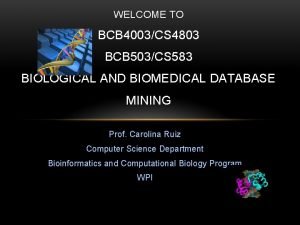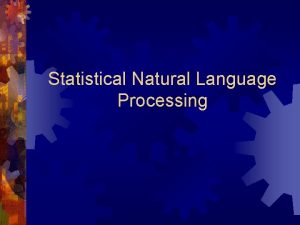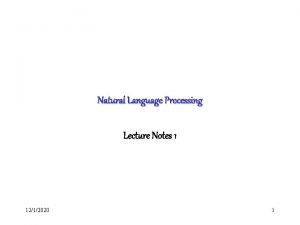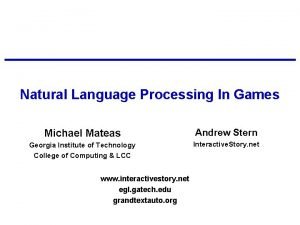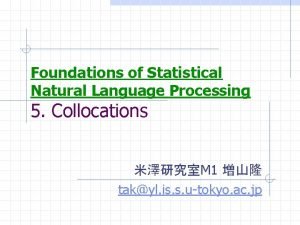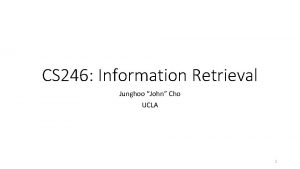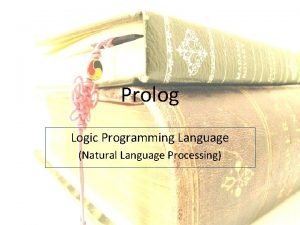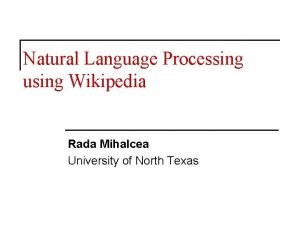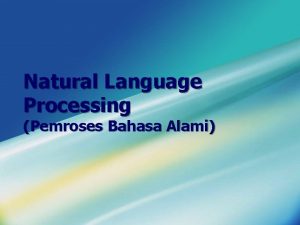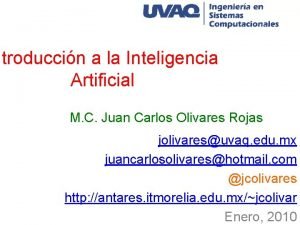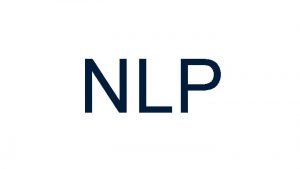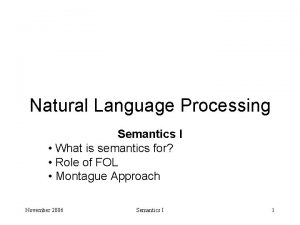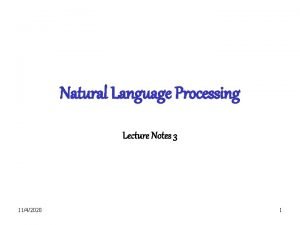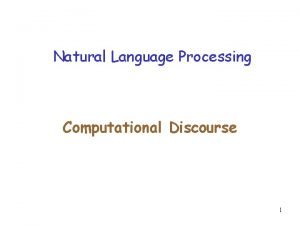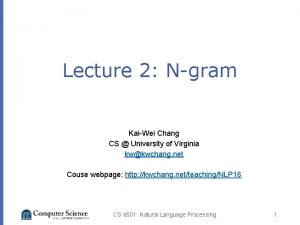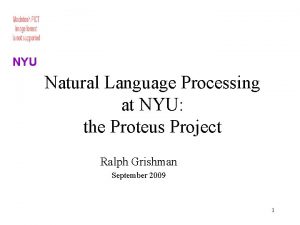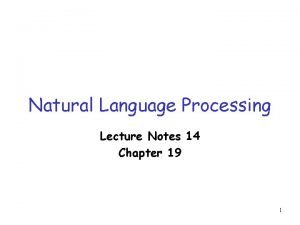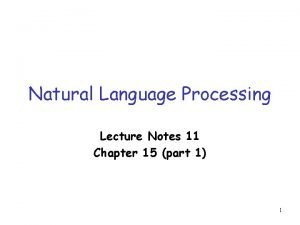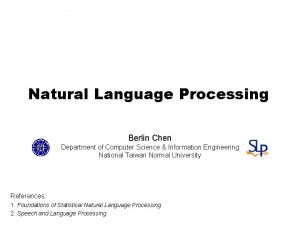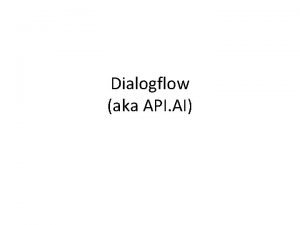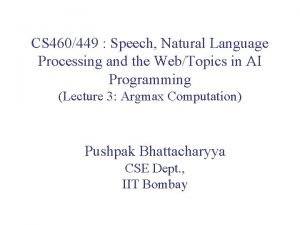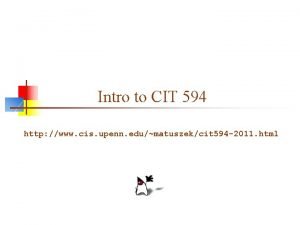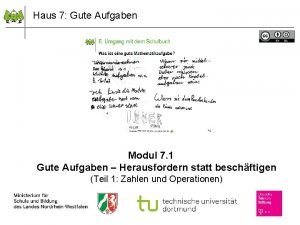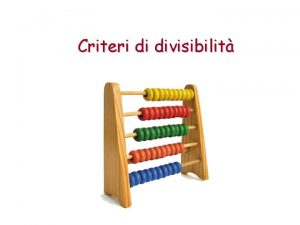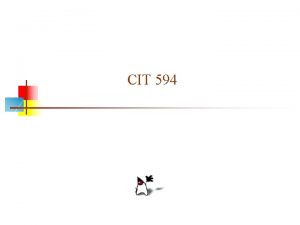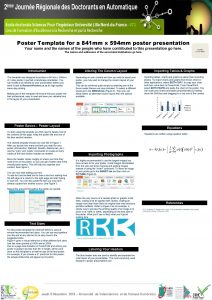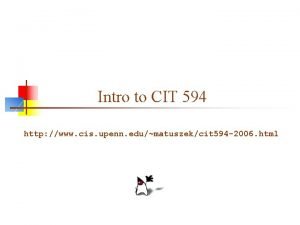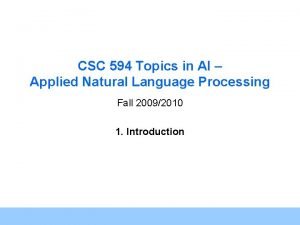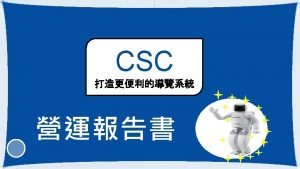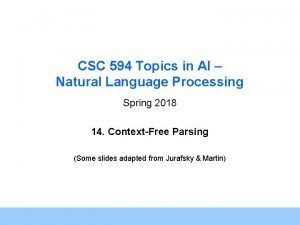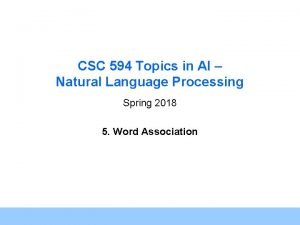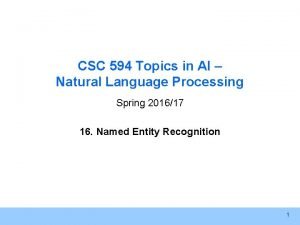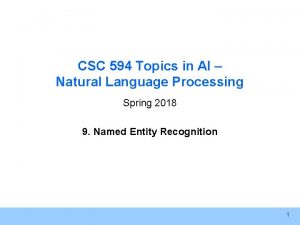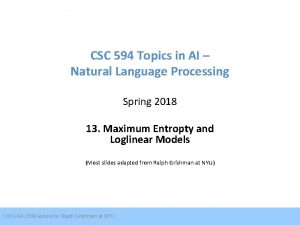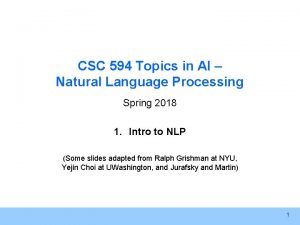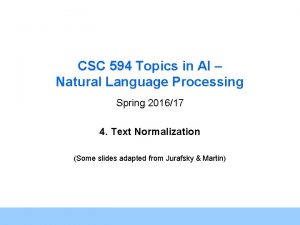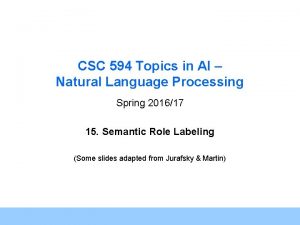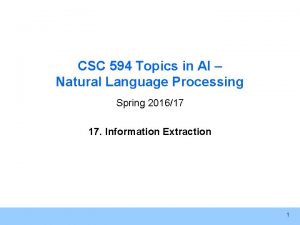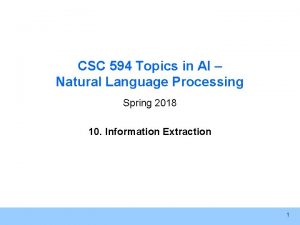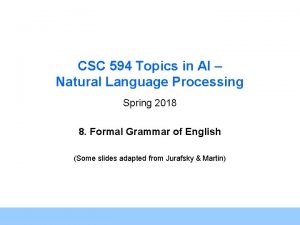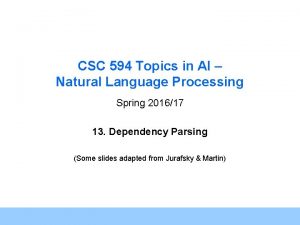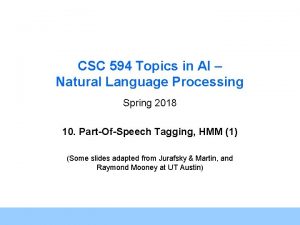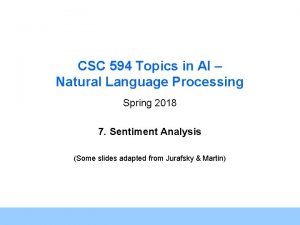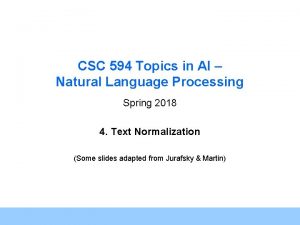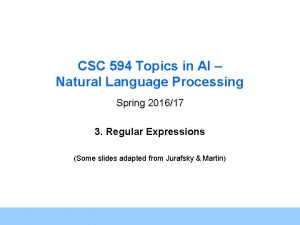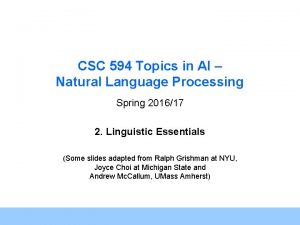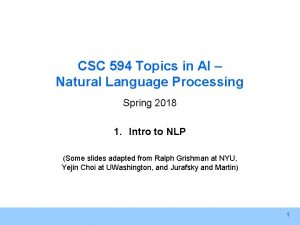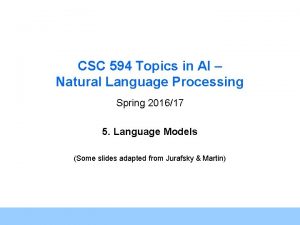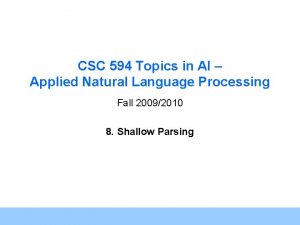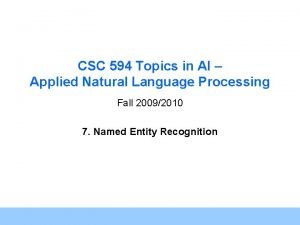CSC 594 Topics in AI Natural Language Processing












![[1] Rule-Based POS Tagging • Make up some regexp rules that make use of [1] Rule-Based POS Tagging • Make up some regexp rules that make use of](https://slidetodoc.com/presentation_image_h2/68646512cdc357679ac52df4e26cca4e/image-13.jpg)
![[3] Transformation-Based Tagger • The Brill tagger (by E. Brill) – Basic idea: do [3] Transformation-Based Tagger • The Brill tagger (by E. Brill) – Basic idea: do](https://slidetodoc.com/presentation_image_h2/68646512cdc357679ac52df4e26cca4e/image-14.jpg)



![[2] Probabilistic POS Tagging • N-grams – The N stands for how many terms [2] Probabilistic POS Tagging • N-grams – The N stands for how many terms](https://slidetodoc.com/presentation_image_h2/68646512cdc357679ac52df4e26cca4e/image-18.jpg)




















- Slides: 38

CSC 594 Topics in AI – Natural Language Processing Spring 2018 12. Part-Of-Speech Tagging (Some slides adapted from Jurafsky & Martin, and Raymond Mooney at UT Austin)

Grammatical Categories: Parts-of-Speech • 8 (ish) traditional parts of speech – Noun, verb, adjective, preposition, adverb, article, interjection, pronoun, conjunction, etc. • • Nouns: people, animals, concepts, things (e. g. “birds”) Verbs: express action in the sentence (e. g. “sing”) Adjectives: describe properties of nouns (e. g. “yellow”) etc. 2

POS examples • • N V ADJ ADV P PRO DET noun verb adjective adverb preposition pronoun determiner chair, bandwidth, pacing study, debate, munch purple, tall, ridiculous unfortunately, slowly of, by, to I, me, mine the, a, that, those Source: Jurafsky & Martin “Speech and Language Processing” 3

POS Tagging • The process of assigning a part-of-speech or lexical class marker to each word in a sentence (and all sentences in a collection). Input: Output: the lead paint is unsafe the/Det lead/N paint/N is/V unsafe/Adj Source: Jurafsky & Martin “Speech and Language Processing” 4

Why is POS Tagging Useful? • First step of a vast number of practical tasks • Helps in stemming • Parsing – Need to know if a word is an N or V before you can parse – Parsers can build trees directly on the POS tags instead of maintaining a lexicon • Information Extraction – Finding names, relations, etc. • Machine Translation • Selecting words of specific Parts of Speech (e. g. nouns) in pre-processing documents (for IR etc. ) Source: Jurafsky & Martin “Speech and Language Processing” 5

POS Tagging Choosing a Tagset • To do POS tagging, we need to choose a standard set of tags to work with • Could pick very coarse tagsets – N, V, Adj, Adv. • More commonly used set is finer grained, the “Penn Tree. Bank tagset”, 45 tags – PRP$, WRB, WP$, VBG • Even more fine-grained tagsets exist Source: Jurafsky & Martin “Speech and Language Processing” 6

Penn Tree. Bank POS Tagset 7

Using the Penn Tagset • Example: The/DT grand/JJ jury/NN commented/VBD on/IN a/DT number/NN of/IN other/JJ topics/NNS. /. • Prepositions and subordinating conjunctions marked IN (“although/IN I/PRP. . ”) • Except the preposition/complementizer “to” is just marked “TO”. Source: Jurafsky & Martin “Speech and Language Processing” 8

Tagged Data Sets • Brown Corpus – – An early digital corpus (1961) Contents: 500 texts, each 2000 words long From American books, newspapers, magazines Representing genres: • Science fiction, romance fiction, press reportage scientific writing, popular lore – 87 different tags • Penn Treebank – First large syntactically annotated corpus – Contents: 1 million words from Wall Street Journal – Part-of-speech tags and syntax trees – 45 different tags – Most widely used currently Source: Andrew Mc. Callum, UMass Amherst 9

POS Tagging • • Words often have more than one POS – ambiguity: – The back door = JJ – On my back = NN – Win the voters back = RB – Promised to back the bill = VB The POS tagging problem is to determine the POS tag for a particular instance of a word. Another example of Part-of-speech ambiguities NNP NNS VBZ VB NNS VBZ CD NN “Fed raises interest rates 0. 5 % in effort to control inflation” Source: Jurafsky & Martin “Speech and Language Processing”, Andrew Mc. Callum, UMass Amherst 10

Current Performance Input: the lead paint is unsafe Output: the/Det lead/N paint/N is/V unsafe/Adj • Using state-of-the-art automated method, how many tags are correct? – About 97% currently – But baseline is already 90% • Baseline is performance of simplest possible method: Tag every word with its most frequent tag, and Tag unknown words as nouns Source: Andrew Mc. Callum, UMass Amherst 11

Three Methods for POS Tagging 1. Rule-based • Hand-coded rules 2. Probabilistic/Stochastic • Sequence (n-gram) models; machine learning Ø HMM (Hidden Markov Model) Ø MEMMs (Maximum Entropy Markov Models) Ø CRF (Conditional Random Field) 3. Transformation-based • Rules + n-gram machine learning Ø Brill tagger Source: Jurafsky & Martin “Speech and Language Processing” 12
![1 RuleBased POS Tagging Make up some regexp rules that make use of [1] Rule-Based POS Tagging • Make up some regexp rules that make use of](https://slidetodoc.com/presentation_image_h2/68646512cdc357679ac52df4e26cca4e/image-13.jpg)
[1] Rule-Based POS Tagging • Make up some regexp rules that make use of morphology Source: Marti Hearst, i 256, at UC Berkeley 13
![3 TransformationBased Tagger The Brill tagger by E Brill Basic idea do [3] Transformation-Based Tagger • The Brill tagger (by E. Brill) – Basic idea: do](https://slidetodoc.com/presentation_image_h2/68646512cdc357679ac52df4e26cca4e/image-14.jpg)
[3] Transformation-Based Tagger • The Brill tagger (by E. Brill) – Basic idea: do a quick job first (using frequency), then revise it using contextual rules. – Painting metaphor from the readings – Very popular (freely available, works fairly well) – A supervised method: requires a tagged corpus Source: Marti Hearst, i 256, at UC Berkeley 14

Brill Tagger: In more detail • Start with simple (less accurate) rules…learn better ones from tagged corpus – Tag each word initially with most likely POS – Examine set of transformations to see which improves tagging decisions compared to tagged corpus – Re-tag corpus using best transformation – Repeat until, e. g. , performance doesn’t improve – Result: tagging procedure (ordered list of transformations) which can be applied to new, untagged text Source: Marti Hearst, i 256, at UC Berkeley 15

Examples • Examples: – They are expected to race tomorrow. – The race for outer space. • Tagging algorithm: 1. Tag all uses of “race” as NN (most likely tag in the Brown corpus) • They are expected to race/NN tomorrow • the race/NN for outer space 2. Use a transformation rule to replace the tag NN with VB for all uses of “race” preceded by the tag TO: • They are expected to race/VB tomorrow • the race/NN for outer space Source: Marti Hearst, i 256, at UC Berkeley 16

Sample Transformation Rules Source: Marti Hearst, i 256, at UC Berkeley 17
![2 Probabilistic POS Tagging Ngrams The N stands for how many terms [2] Probabilistic POS Tagging • N-grams – The N stands for how many terms](https://slidetodoc.com/presentation_image_h2/68646512cdc357679ac52df4e26cca4e/image-18.jpg)
[2] Probabilistic POS Tagging • N-grams – The N stands for how many terms are used/looked at • Unigram: 1 term (0 th order) • Bigram: 2 terms (1 st order) • Trigrams: 3 terms (2 nd order) – Usually don’t go beyond this – You can use different kinds of terms, e. g. : • Character, Word, POS – Ordering • Often adjacent, but not required – We use n-grams to help determine the context in which some linguistic phenomenon happens. • e. g. , Look at the words before and after the period to see if it is the end of a sentence or not. Source: Marti Hearst, i 256, at UC Berkeley 18

Probabilistic POS Tagging (cont. ) • Tagging with lexical frequencies Secretariat/NNP is/VBZ expected/VBN to/TO race/VB tomorrow/NN People/NNS continue/VBP to/TO inquire/VB the/DT reason/NN for/IN the/DT race/NN for/IN outer/JJ space/NN – Problem: assign a tag to “race” given its lexical frequency – Solution: we choose the tag that has the greater conditional probability -> a probability of the word in a given POS • P(race|VB) • P(race|NN) Source: Marti Hearst, i 256, at UC Berkeley 19

Unigram Tagger • Train on a set of sentences • Keep track of how many times each word is seen with each tag. • After training, associate with each word its most likely tag. – Problem: many words never seen in the training data. – Solution: have a default tag to “backoff” to. More problems… • Most frequent tag isn’t always right! • Need to take the context into account – Which sense of “to” is being used? – Which sense of “like” is being used? Source: Marti Hearst, i 256, at UC Berkeley 20

N-gram Tagger • Uses the preceding N-1 predicted tags • Also uses the unigram estimate for the current word Source: Marti Hearst, i 256, at UC Berkeley 21

How N-gram Tagger Works • Constructs a frequency distribution describing the frequencies each word is tagged with in different contexts. – The context considered consists of the word to be tagged and the n-1 previous words' tags. • After training, tag words by assigning each word the tag with the maximum frequency given its context. – Assigns “None” tag if it sees a word in a context for which it has no data (which it has not seen). • Tuning parameters – “cutoff” is the minimal number of times that the context must have been seen in training in order to be incorporated into the statistics – Default cutoff is 1 Source: Marti Hearst, i 256, at UC Berkeley 22

POS Tagging as Sequence Classification • We are given a sentence (an “observation” or “sequence of observations”) – Secretariat is expected to race tomorrow • What is the best sequence of tags that corresponds to this sequence of observations? • Probabilistic view: – Consider all possible sequences of tags – Out of this universe of sequences, choose the tag sequence which is most probable given the observation sequence of n words w 1…wn. Jurafsky & Martin “Speech and Language Processing” 23

Two Kinds of Probabilities • Tag transition probabilities p(ti|ti-1) – Determiners likely to precede adjs and nouns • • That/DT flight/NN The/DT yellow/JJ hat/NN So we expect P(NN|DT) and P(JJ|DT) to be high But P(DT|JJ) to be: – Compute P(NN|DT) by counting in a labeled corpus: Jurafsky & Martin “Speech and Language Processing” 25

Two Kinds of Probabilities • Word likelihood probabilities p(wi|ti) – VBZ (3 sg Pres verb) likely to be “is” – Compute P(is|VBZ) by counting in a labeled corpus: Jurafsky & Martin “Speech and Language Processing” 26

Example: The Verb “race” • Secretariat/NNP is/VBZ expected/VBN to/TO race/VB tomorrow/NR • People/NNS continue/VB to/TO inquire/VB the/DT reason/NN for/IN the/DT race/NN for/IN outer/JJ space/NN • How do we pick the right tag? Jurafsky & Martin “Speech and Language Processing” 27

Disambiguating “race” Jurafsky & Martin “Speech and Language Processing” 28

Disambiguating “race” Jurafsky & Martin “Speech and Language Processing” 29

Example • • • P(NN|TO) =. 00047 P(VB|TO) =. 83 P(race|NN) =. 00057 P(race|VB) =. 00012 P(NR|VB) =. 0027 P(NR|NN) =. 0012 • P(VB|TO)P(NR|VB)P(race|VB) =. 00000027 • P(NN|TO)P(NR|NN)P(race|NN)=. 0000032 • So we (correctly) choose the verb tag for “race” Jurafsky & Martin “Speech and Language Processing” 29 30

Hidden Markov Model (HMM) Decoding • We want, out of all sequences of n tags t 1…tn the single tag sequence such that P(t 1…tn|w 1…wn) is highest. • Hat ^ means “our estimate of the best one” • Argmaxx f(x) means “the x such that f(x) is maximized” Speech and Language Processing - Jurafsky and Martin 30

Definition of HMM • States Q = q 1, q 2…q. N; • Observations O= o 1, o 2…o. N; – Each observation is a symbol from a vocabulary V = {v 1, v 2, …v. V} • Transition probabilities – Transition probability matrix A = {aij} • Observation likelihoods – Output probability matrix B={bi(k)} • Special initial probability vector Source: Jurafsky & Martin “Speech and Language Processing” 31

Transition Probabilities Source: Jurafsky & Martin “Speech and Language Processing” 32

Observation Likelihoods Source: Jurafsky & Martin “Speech and Language Processing” 33

The Viterbi Algorithm Source: Jurafsky & Martin “Speech and Language Processing” 35

Viterbi Example Source: Jurafsky & Martin “Speech and Language Processing” 36

Source: Jurafsky & Martin “Speech and Language Processing” 37

Error Analysis • Look at a confusion matrix • See what errors are causing problems – Noun (NN) vs Proper. Noun (NNP) vs Adj (JJ) – Preterite (VBD) vs Participle (VBN) vs Adjective (JJ) Source: Jurafsky & Martin “Speech and Language Processing” 38

Evaluation • The result is compared with a manually coded “Gold Standard” – Typically accuracy reaches 96 -97% – This may be compared with result for a baseline tagger (one that uses no context). • Important: 100% is impossible even for human annotators. Source: Jurafsky & Martin “Speech and Language Processing” 39
 Natural language processing vietnamese
Natural language processing vietnamese Probabilistic model natural language processing
Probabilistic model natural language processing Natural language processing nlp - theory lecture
Natural language processing nlp - theory lecture Markov chain natural language processing
Markov chain natural language processing Language
Language Pengertian natural language processing
Pengertian natural language processing Discourse analysis nlp
Discourse analysis nlp Nlp lecture notes
Nlp lecture notes Foundations of statistical natural language processing
Foundations of statistical natural language processing Natural language processing fields
Natural language processing fields Statistical nlp
Statistical nlp Natural language processing nlp - theory lecture
Natural language processing nlp - theory lecture Façade michael mateas
Façade michael mateas Collocation nlp
Collocation nlp Ucla natural language processing
Ucla natural language processing History of prolog
History of prolog Rada mihalcea
Rada mihalcea Pengertian natural language processing
Pengertian natural language processing Natural language processing
Natural language processing Natural language processing
Natural language processing Natural language processing
Natural language processing Dot translation
Dot translation Natural language processing lecture notes
Natural language processing lecture notes Natural language processing
Natural language processing Natural language processing
Natural language processing Nyu nlp
Nyu nlp Natural language processing lecture notes
Natural language processing lecture notes Natural language processing lecture notes
Natural language processing lecture notes Nlp berlin
Nlp berlin Dialogflow natural language processing
Dialogflow natural language processing Natural language processing
Natural language processing Upenn cis
Upenn cis Umkehrzahlen grundschule
Umkehrzahlen grundschule Tabella criteri di divisibilità
Tabella criteri di divisibilità Cit594
Cit594 841*594
841*594 Cit594
Cit594 Magni 599
Magni 599 Ai 594
Ai 594

